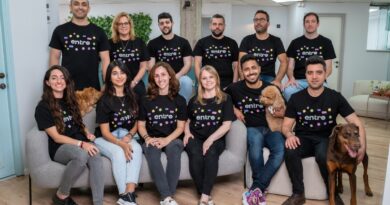Together raises $20M to build open source generative AI models
Generative AI — AI that can write essays, create artwork and music, and more — continues to attract outsize investor attention. According to one source, generative AI startups raised $1.7 billion in Q1 2023, with an additional $10.68 billion worth of deals announced in the quarter but not yet completed.
There’s scores of competition, including incumbents like OpenAI and Anthropic. But despite that, VCs aren’t shying away from untested players and up-and-comers.
Case in point, Together, a startup developing open source generative AI, today announced that it raised $20 million — on the larger side for a seed round — led by Lux Capital with participation from Factory, SV Angel, First Round Capital, Long Journey Ventures, Robot Ventures, Definition Capital, Susa Ventures, Cadenza Ventures and SCB 10x. Several high-profile angel investors were also involved, including Scott Banister, one of the co-founders of PayPal, and Jeff Hammerbacher, a Cloudera founding employee.
“Together is spearheading AI’s ‘Linux moment’ by providing an open ecosystem across compute and best in class foundation models,” Lux Capital’s Brandon Reeves told TechCrunch via email. “Together team is committed to creating a vibrant open ecosystem that allows anyone from individuals to enterprises to participate.”
Together, launched in June 2022, is the brainchild of Vipul Ved Prakash, Ce Zhang, Chris Re and Percy Liang. Prakash previously founded social media search platform Topsy, which was acquired in 2013 by Apple, where he later became a senior director. Zhang is an associate professor of computer science at ETH Zurich, currently on sabbatical and leading research in “decentralized” AI. As for Re, he’s co-founded various startups, including SambaNova, which builds hardware and integrated systems for AI. And Liang, a computer science professor at Stanford, directs the university’s Center for Research on Foundation Models (CRFM).
With Together, Prakash, Zhang, Re and Liang are seeking to create open source generative AI models and services that, in their words, “help organizations incorporate AI into their production applications.” To that end, Together is building a cloud platform for running, training and fine-tuning open source models that the co-founders claim will offer scalable compute at “dramatically lower” prices than the dominant vendors (e.g., Google Cloud, AWS, Azure).
“We believe that generative models are a consequential technology for society and open and decentralized alternatives to closed systems are going to be critical to enable the best outcomes for AI and society,” Prakash told TechCrunch in an email interview. “As enterprises define their generative AI strategies, they’re looking for privacy, transparency, customization and ease of deployment. Current cloud offerings, with closed-source models and data, do not meet their requirements.”
He has a point — insofar as incumbents are feeling the pressure, at least. An internal Google memo leaked earlier in the month implies that the search giant — and its rivals, for that matter — can’t compete against open source AI initiatives over the long run. Meanwhile, OpenAI reportedly is preparing to publicly debut its first open source text-generating AI model amid a proliferation of open source alternatives.
One of Together’s first projects, RedPajama, aims to foster a set of open source generative models, including “chat” models along the lines of OpenAI’s ChatGPT. A collaborative work between Together and several groups, including the MILA Québec AI Institute, CRFM and ETH’s data science lab, DS3Lab, RedPajama began with the release of a dataset that enables organizations to pretrain models that can be permissively licensed.
Together’s other efforts to date include GPT-JT, a fork of the open source text-generating model GPT-J-6B (released by the research group EleutherAI), and OpenChatKit, an attempt at a ChatGPT equivalent.
“Today, training, fine-tuning or productizing open source generative models is extremely challenging,” Prakash said. “Current solutions require that you have significant expertise in AI and are simultaneously able to manage the large-scale infrastructure needed. The Together platform takes care of both challenges out-of-the-box, with an easy-to-use and accessible solution.”
Just how seamless Together is remains to be seen, though — the platform has yet to launch in GA. And, one might argue, its efforts are a bit duplicative in the context of the broader AI landscape. The number of open source models both from community groups and large labs grows by the day, practically. And while not all are licensed for commercial use, several, like Databricks’ Dolly 2.0, are.
On the AI hardware infrastructure front, besides the big public cloud providers, startups like CoreWeave claim to offer powerful compute for below market rates. There’s even been attempts at building community-powered, free services for running AI text-generating models. (Together intends to follow in the footsteps of these community groups by building a platform, tentatively called the Together Decentralized Cloud, that’ll pool hardware resources, including GPUs from volunteers around the internet.)
So what does Together bring to the table? Greater transparency, control and privacy, Prakash argues. It’s a sales pitch not dissimilar to the one made by startup Stability AI, which funnels compute and capital toward open source research while commercializing — and selling services on top of — the various finished products.
“Regulated enterprises will be big customers of open source, as open source models pre-trained on open data sets enable organizations to fully inspect, understand and customize the models to their own applications,” he said. “We believe that the challenges in AI can only be overcome by a global community working together. So we made it our mission to build and steward a self-sustaining, open ecosystem that produces the best AI systems for humanity.”
It’s a lofty goal, to be sure. And it’s early days for Together, which wouldn’t say whether it has any customers at present — much less revenue. But the company is forging ahead, planning to increase the size of its team from 24 employees to around 40 by the end of the year and spend the rest of the seed capital on R&D, infrastructure and product development.
“The Together solution, based on open source generative models, was built on understanding requirements from large organizations and addressing each of these needs, to provide enterprises with the core platform for their generative AI strategy,” Prakash said. “Together is seeing tremendous interest from enterprises looking for greater transparency, control, and privacy.”
Together raises $20M to build open source generative AI models by Kyle Wiggers originally published on TechCrunch





